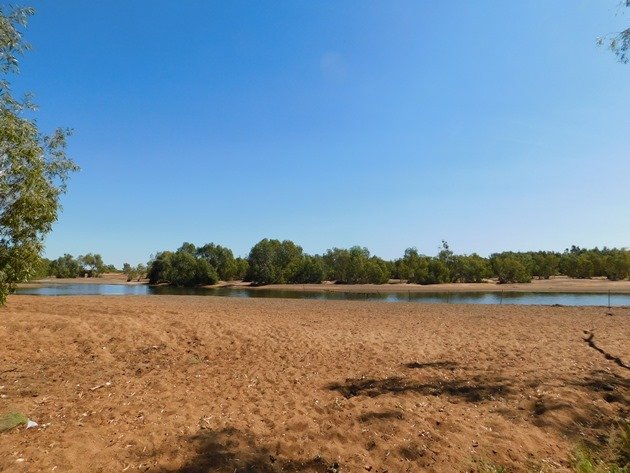
Due to the fact that we live near the coast in Broome we often choose to head inland to a river or an ephemeral wetland whenever we can to go birdwatching and or camping. There are plenty of rivers to choose from in the north of Western Australia, but for much of the year they can almost run dry. If they are flowing well it is highly likely that you can’t get near them due to the highway being closed due to flooding! In any case, if they are really flowing very fast then the birdlife will not be that great!
Our closest river to Broome is the Fitzroy River, which I have spoken of many times over the years. If we head further north we have the Pentecost River near Kununurra. Heading down the Duncan Road there is the Behn River and the Negri River to birdwatch, but once again it is seasonal.
If we drive down south towards the Pilbara the first river that we reach is the De Grey River. It is always worth a stop there and the bridge over the river is high enough that the highway rarely gets closed at that point. Our favourite route from there is to take the Marble Bar road towards Marble Bar. Even the smallest amount of water left behind after months without rain is worth stopping at, due to the amount of bird species that rely so heavily on water to survive.
We always stop at the Shaw River on the Marble Bar road, because even though there is rarely water flowing there are always plenty of birds to see and it is a nice spot to sit in the shade and have lunch. We pulled up on our last trip last month on May 23rd for lunch and there were only pools of water, but that was enough to sustain a good mixture of birds and other wildlife. As you can see from the header photo it is there is a lot more river sand than there is water.
The first birds that we noticed in the area were the Straw-necked Ibis, Yellow-throated Miners and Australian Pelicans. There were three Intermediate Egrets and two Great Egrets, hundreds of Little Corellas and a Sacred Kingfisher near where we could pull off the highway. There was the familiar call of the Red-browed Pardalote and White-plumed Honeyeaters, Peaceful Doves, Diamond Doves and Budgerigars were all close to the water.
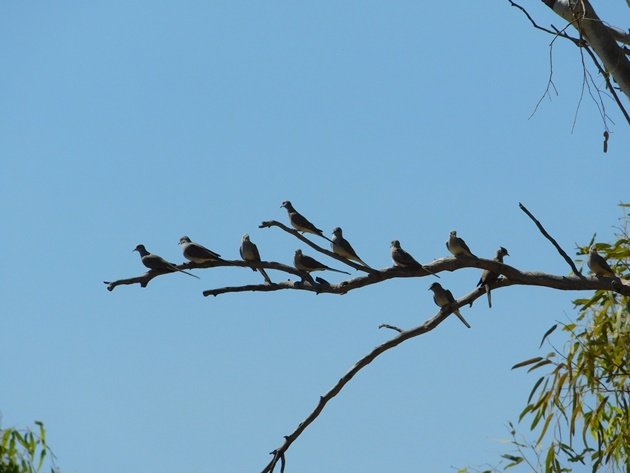
Diamond Doves near the water
Zebra Finch, Black-faced Cuckoo-shrikes, Willie Wagtails and Torresian Crows were amongst the trees that lined the remaining pools of water. In the remaining water there were Grey Teal, Little Pied Cormorants, Little Black Cormorants and a Black-necked Stork wandering in the shallows looking for food.
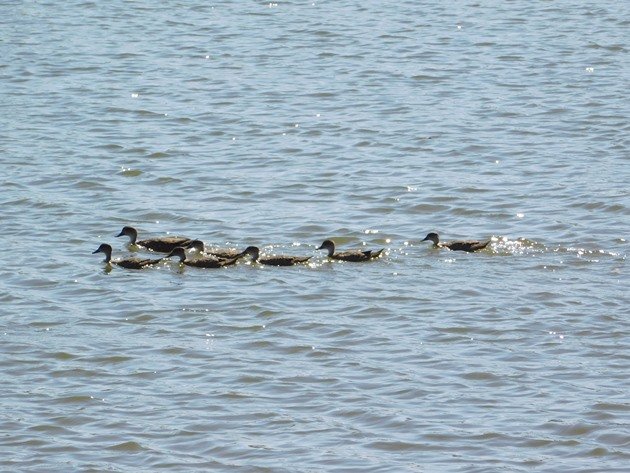
Grey Teal
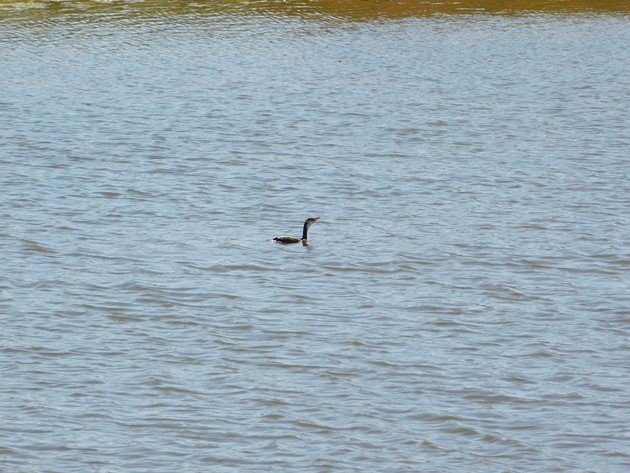
Little Pied Cormorant
Wandering on the far bank there was both a White-necked Heron and a White-faced Heron and numerous Black-fronted Dotterels and Masked Lapwings.
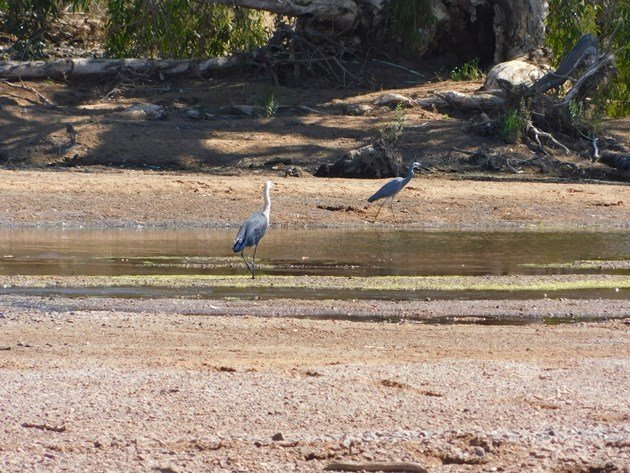
White-faced Heron and White-necked Heron
When we first pulled up we noted a small group of six Australian Pelicans. They started to literally fall out of the sky whilst we were birdwatching! The numbers continued to increase until there were thirty nine Australian Pelicans. We had no idea where they came from due to the fact that they suddenly appeared from an incredible height and descended feet first to the pools of water. We often encounter this sort of behaviour when you are “in the middle of nowhere” and it is a delight to watch these magnificent birds drop from the sky.
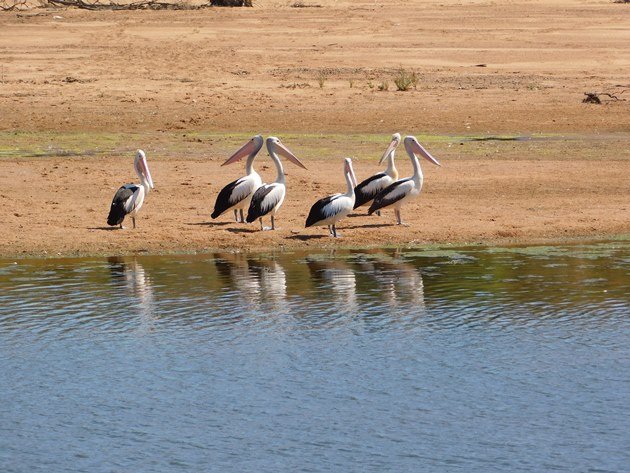
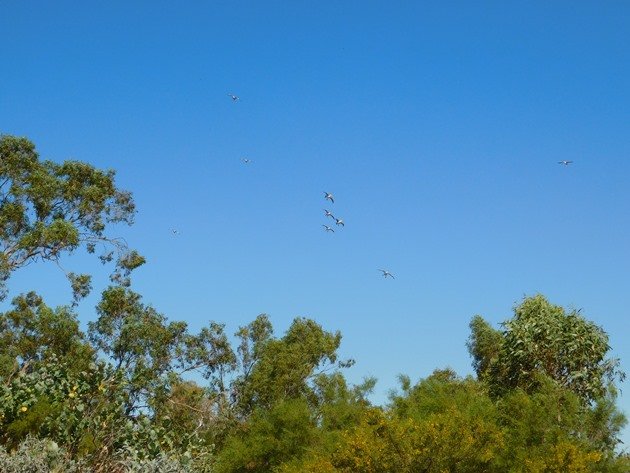
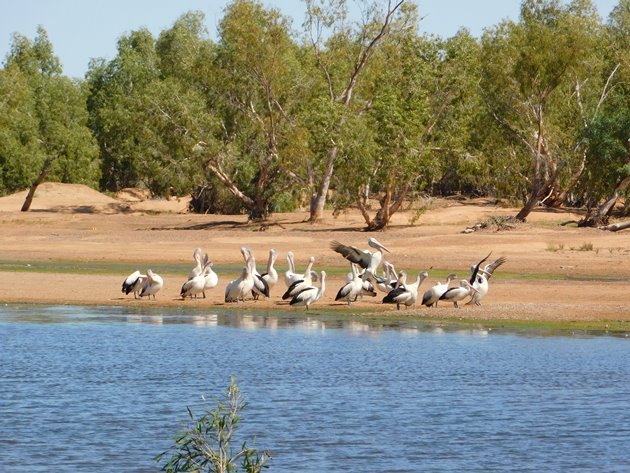
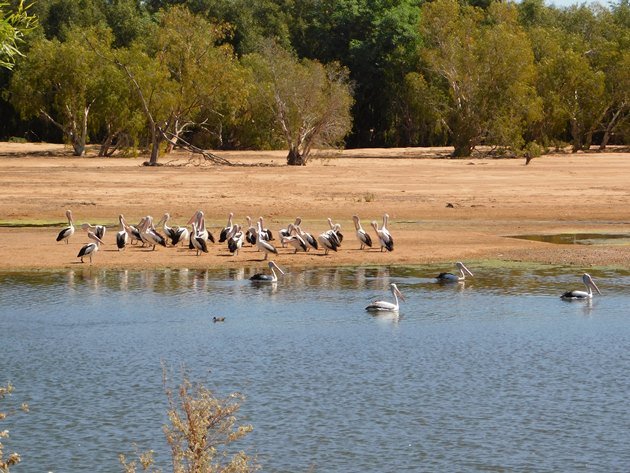
Australian Pelicans
There were also numerous Black Kites and Whistling Kites hanging around as is often the case in the north of Western Australia. Although we did not stop for very long it was a worthwhile stop as always and especially to see the arrival of the Australian Pelicans. No doubt they would leave as dramatically as they arrived and wander off to their next destination just like ourselves.
The next river that you encounter along the Marble Bar road is the Coongan at Doolena Gorge followed by the Nullagine River and then the Fortescue River, which I mentioned last week. Despite the fact that many of these rivers do run dry they do offer good birding when you can get to them.











Leave a Comment